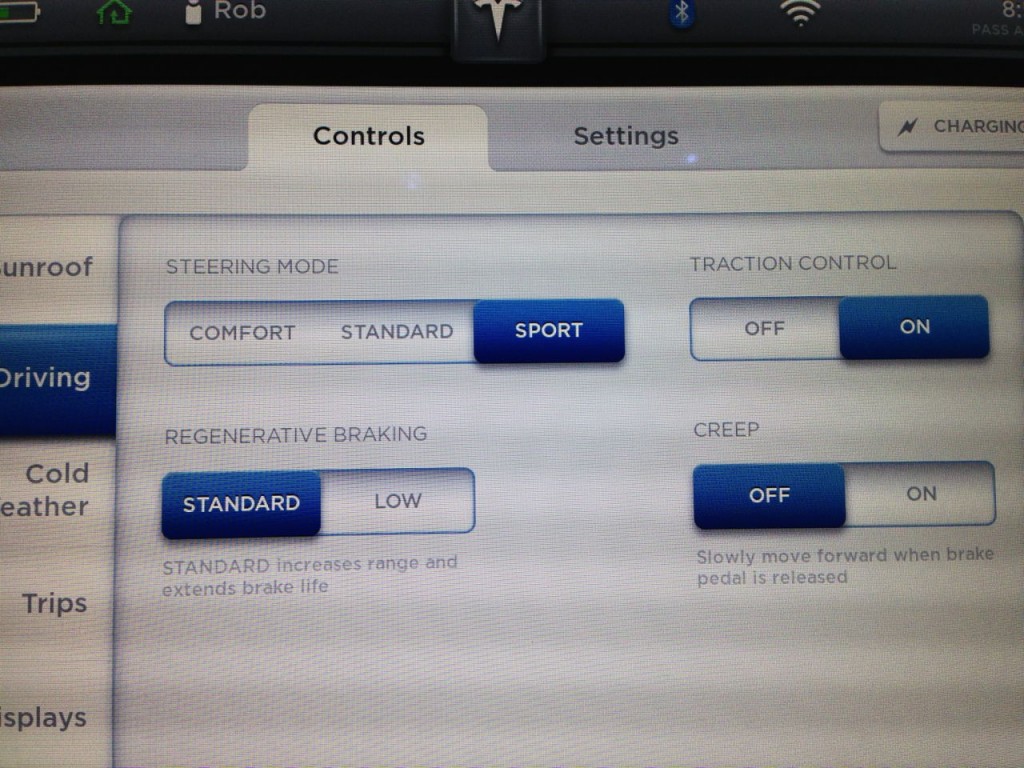Tesla Model S
How does the Tesla Model S Traction Control system work?
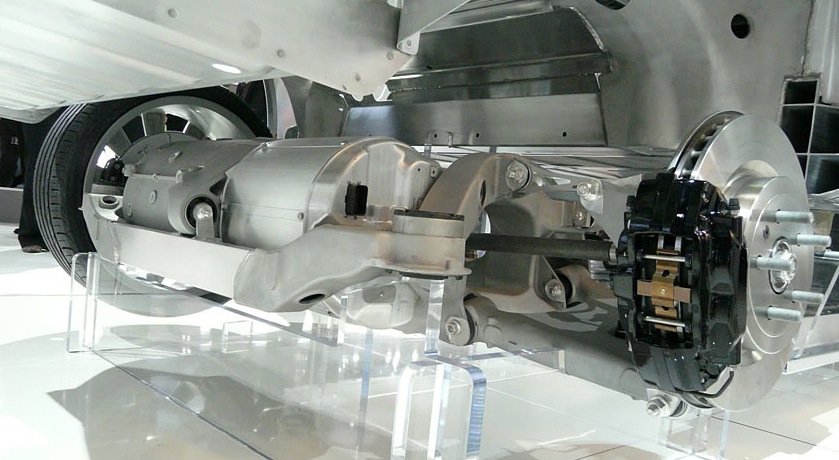
I was pulling out of the parking lot at work the other day and happened to experience some wheel spin as I drove over a patch of sand near a construction site. One wheel spun with limited grip while the other wheel pushed me through the slippery patch. The wheel modulation happened automatically and trouble free which led me to think – How does the Model S traction control work?
Before I dive into it all, one caveat: I’m an electrical/software engineer and not a mechanical engineer. I can change a tire, I used to change my own oil many years ago, but otherwise I let a trusted shop (usually a dealer) do all of the work. The information below is based on my own research and opinions.
Open Differential
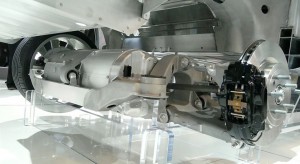 I had a very basic knowledge of how the AC induction motor drives the wheels on my Model S. I thought it was just a direct current motor with a positive and negative terminal that spun one way or the other depending on polarity which in turn spun the wheels. This kind of thinking comes from my days dealing with radio control hobby kits coming out of Radio Shack. I hadn’t thought about how that may translate into driving of two wheels, nor how it would handle situations where traction is limited due to sand and ice.
I had a very basic knowledge of how the AC induction motor drives the wheels on my Model S. I thought it was just a direct current motor with a positive and negative terminal that spun one way or the other depending on polarity which in turn spun the wheels. This kind of thinking comes from my days dealing with radio control hobby kits coming out of Radio Shack. I hadn’t thought about how that may translate into driving of two wheels, nor how it would handle situations where traction is limited due to sand and ice.
It turns out, the shaft of the Model S electric motor inserts into an open differential gear box that then drives the two wheels. This gearing allows the outside drive wheel to rotate faster than the inner drive wheel during turns. Without this gearing either the inside wheel will rotate too fast or the outside wheel will drag. Any imbalance may lead to poor handling, damage to your tires and introduce a lot of stress to the drivetrain. HowStuffWorks has great animated images showing how it operates in action.
Tesla describes the gearing as follows (for the Roadster):
“The motor is directly coupled to a single speed gearbox, above the rear axle. The simplicity of a single gear ratio reduces weight and eliminates the need for complicated shifting and clutch work. The elegant motor does not need a complicated reverse gear – the motor simply spins in the opposite direction.”
The downside of the open differential approach is that torque is evenly applied to both wheels. The traction control system limits the maximum amount of torque that can be applied to each wheel without making it slip.
Turning traction control off essentially allows the motor to not back down even when one of the tires is spinning. This can often result in a lot of tire spinning and will not necessarily remove you from being stuck. In fact you may end up digging a deeper hole than the one you’re already in.
Limited Slip
Traditionally a limited slip differential allows for torque to be applied independently of each wheel. This involves complicated gearing which involves more components, adds additional weight and overall may not be as reliable on a Model S that produces such astronomical torque. For that reason Tesla chose to utilize a much simpler and sturdier open differential. But they needed to solve the slip problem.
Tesla solved the problem on the Model S by selectively applying rear brakes in order to transfer torque to the wheel that grips. These commands are fed into the electronic stability control system which is capable of braking the rear wheels independently as a way to improve the handling of the car under various conditions.
Tesla describes both traction and stability control as follows:
“Model S Traction Control is designed to ensure maximum contact between the road and the tires. Whether you are accelerating off the line, zooming along the winding roads of the Rockies or find yourself in a Gulf Coast rainstorm, Traction Control prevents loss of traction and maintains control. Stability Control reacts in moments of under-steer or over-steer by reducing torque and applying the brakes to individual wheels for enhanced control when cornering.”
Summary
Tesla Motors is about disrupting the norm and re-thinking how things should be done. If you start from scratch and question every design decision, every part, every ounce of weight, every approach and leverage the best minds on the planet, what kind of car will you end up with? The Model S is Tesla’s current answer and certainly not their final answer.
Tesla’s traction control and emulated limited slip functionality is another case of Tesla replacing complex and inefficient hardware with something lighter, simpler and more state of the art – augmenting functionality through software and algorithmic science utilizing today’s advanced computing power.
The next time you slam that “go” pedal and take off like a space ship, think about all the technology that’s helping you launch into the future.

News
Tesla makes a decision on the future of its flagship Model S and Model X
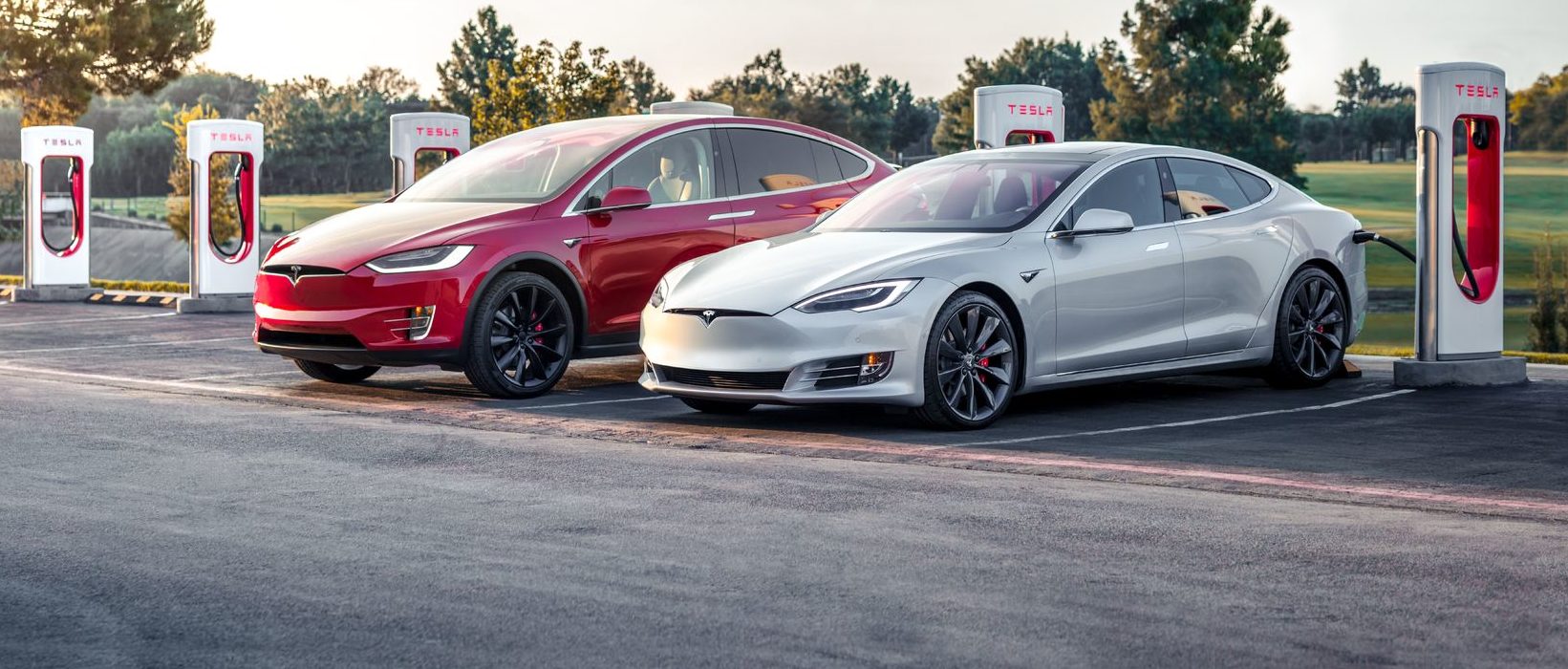
Tesla has made a decision regarding the future of its flagship vehicles, the Model S and Model X, which both have been sticking around for “sentimental reasons” and have no true alignment with the company’s future goals of growth.
The Model S and Model X were Tesla’s first two vehicles to be offered to the public.
They were essentially fundraisers for future, mass-market, affordable models, according to Elon Musk’s “Tesla Master Plan,” but their ability to still attract some buyers thanks to the performance of the Model S or the space of the Model X keeps them lingering.
But speculation regarding the vehicles’ true place in the expanding Tesla lineup has been persistent. With the vehicles, which have been grouped in with the Cybertruck in its quarterly delivery releases, only amounting to 23,000 deliveries in Q4, there are questions as to whether it is still worth keeping them around.
Tesla’s VP of Vehicle Engineering, Lars Moravy, said on the Ride the Lightning podcast yesterday that there are currently no plans to eliminate the Model S and Model X from the lineup.
When asked about whether there were plans for the Model S and Model X moving forward, Moravy replied:
“Just give it a minute. We’ll get there. The upgrade a couple of years ago was bigger than most people thought in terms of architecture and structure of the car got a lot better, too. But, we’ll give it some love later this year and make sure it gets a little bit…you know, with the stuff we’ve been putting in 3 and Y. Obviously, with 3 and Y, the higher volume stuff, you’ve gotta focus there.”
He confirmed that the two vehicles were not going anywhere “anytime soon.”
? When @DMC_Ryan asked Lars Moravy if Model S and Model X have some updates coming, the Tesla VP of Vehicle Engineering said:
“Just give it a minute. We’ll get there.”
Sounds like another refresh is coming, and the flagships aren’t going anywhere. pic.twitter.com/Y6MPp47MJC
— TESLARATI (@Teslarati) February 23, 2025
Moravy said the Model S and Model X are great consider when you consider autonomy and the robotaxi use: the Model S due to its overall quality and the Model X because of its interior space.
Need accessories for your Tesla? Check out the Teslarati Marketplace:
- https://shop.teslarati.com/collections/tesla-cybertruck-accessories
- https://shop.teslarati.com/collections/tesla-model-y-accessories
- https://shop.teslarati.com/collections/tesla-model-3-accessories
Please email me with questions and comments at joey@teslarati.com. I’d love to chat! You can also reach me on Twitter @KlenderJoey, or if you have news tips, you can email us at tips@teslarati.com.
News
Tesla is offering a crazy Supercharging incentive on its two ‘sentimental’ vehicles
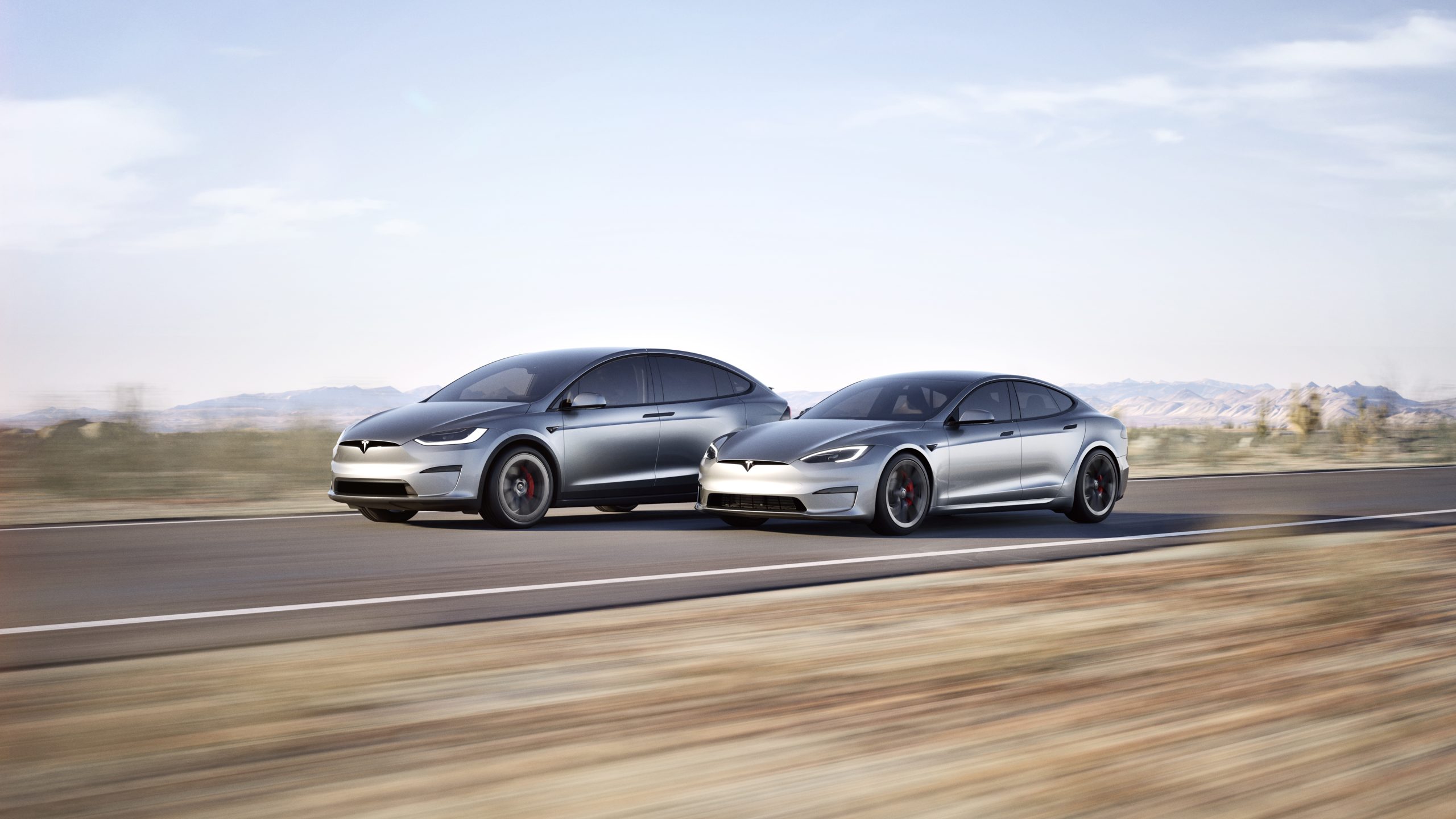
Tesla is offering a crazy Supercharging incentive for those who choose to buy two vehicles that CEO Elon Musk said the company is keeping around for “sentimental reasons” a few years ago.
Tesla Supercharging incentives are pretty hard to come by, and it is hard to tell when the company is going to offer them. Usually, they are used to move vehicles and nudge consumers toward purchasing one model over another.
However, Tesla sometimes offers Supercharging incentives at random times for no real reason other than luck of the draw.
However, Tesla is using the Supercharging incentive to help move two of the cars that are low-volume sellers, but are kept around for what Musk called “sentimental reasons” in 2019.
Tesla is offering free Supercharging for those who choose to purchase or lease a new Model S or Model X.
The offer is good for the life of your ownership or lease. Tesla talks more about the terms on its website:
“Customers who purchase or lease a new Model X (or Model S) are eligible for free Supercharging during your ownership of the vehicle. Offer is tied to your Tesla Account and cannot be transferred to another vehicle, person or order, even in the case of ownership transfer. Used vehicles, business orders and vehicles used for commercial purposes (like taxi, rideshare and delivery services) are excluded from this promotion. You are still responsible for Supercharger fees, like idle and congestion fees, when applicable.”
This is a great promotion to attempt and move some of Tesla’s vehicles, especially two that the company only keeps around because they are two of the company’s foundational, flagship cars.
Musk said in 2019:
“I mean, they’re very expensive, made in low volume. To be totally frank, we’re continuing to make them more for sentimental reasons than anything else. They’re really of minor importance to the future.”
Tesla has not released a major update to the Model S or Model X in a few years. In 2022, it launched the Plaid configuration, but it has not received any true modifications since then, leading some to believe they could be sunsetted in the future.
For now, it seems they will be sticking around, but Tesla is still adjusting the prices and incentives of the two vehicles. Earlier this week, Tesla pushed the Model X’s price in the U.S. up by $5,000.
Need accessories for your Tesla? Check out the Teslarati Marketplace:
- https://shop.teslarati.com/collections/tesla-cybertruck-accessories
- https://shop.teslarati.com/collections/tesla-model-y-accessories
- https://shop.teslarati.com/collections/tesla-model-3-accessories
Please email me with questions and comments at joey@teslarati.com. I’d love to chat! You can also reach me on Twitter @KlenderJoey, or if you have news tips, you can email us at tips@teslarati.com.
News
Tesla Cybertruck recall shows healthy production ramp, but Model S and X are suffering
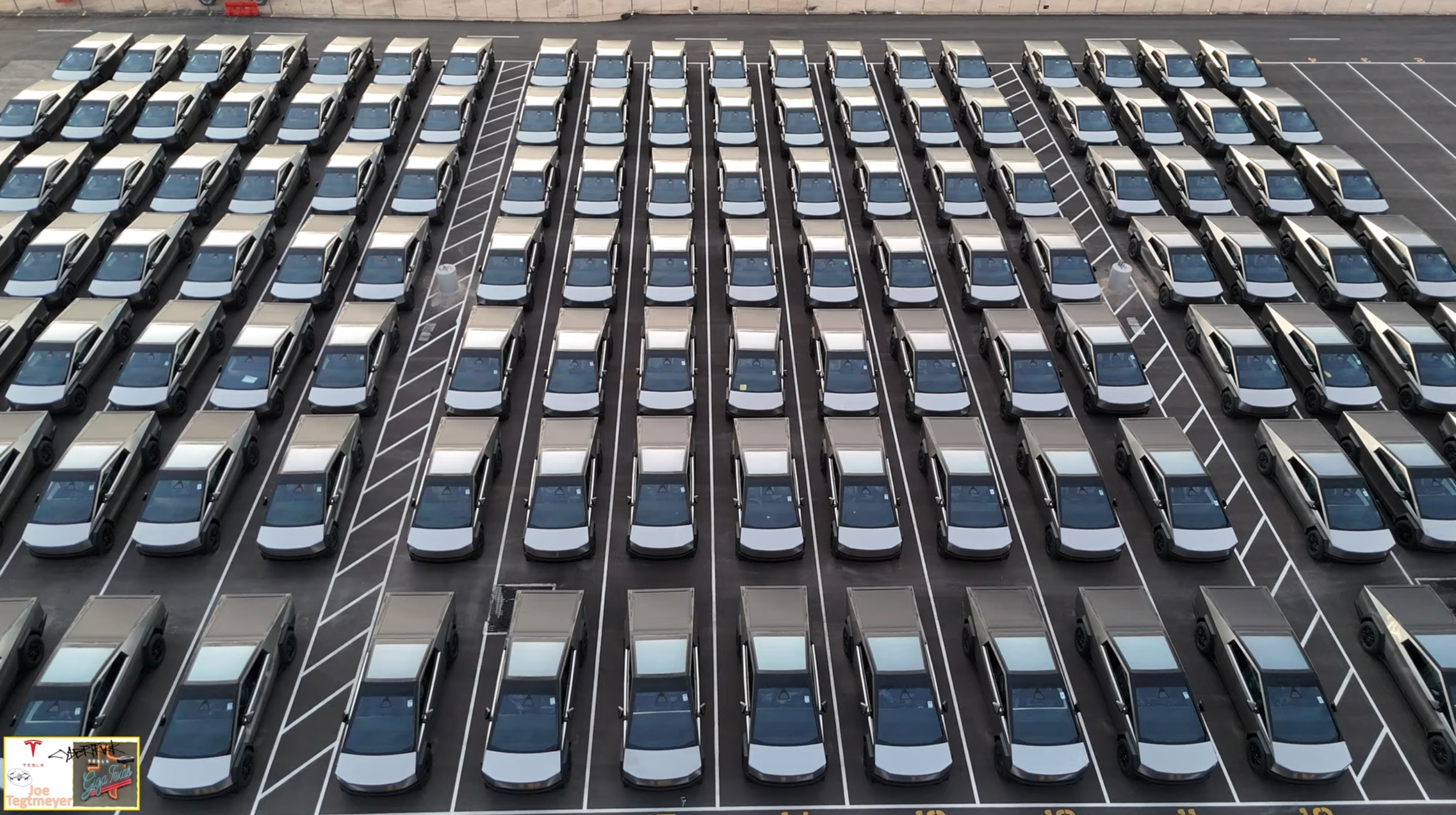
This morning’s reports of a Tesla Cybertruck recall only went to shed more light on how the production ramp of the pickup is going.
With delivery figures for the third quarter revealed yesterday, it also shows a grim reality for the Model S and Model X, two vehicles that have become more of a novelty in Tesla’s lineup as the Model 3, Model Y, and Cybertruck have truly taken charge.
The NHTSA documents released this morning show the Cybertruck is being recalled for a delayed rearview image, which will be resolved with an Over-the-Air update.
Tesla addresses Cybertruck rearview camera “recall” with free software update
However, they also show that 27,185 units are potentially impacted by the issue, giving us a rough guess of how many Cybertrucks have been produced thus far.
The breakdown seems to show that from the last Cybertruck recall in June, when 11,688 units were potentially impacted, we have seen roughly 15,497 additional pickups make their way to customers.
In a perfect world, that would mean 910 Cybertruck are delivered every week, or 130 per day, and since the first recall occurred with three weeks left in June and in Q2, we can subtract 2,730 Cybertrucks from the 15,497 that have been delivered since then.
We know that as of now there are 27,185 Cybertrucks delivered, and as of June 6, there were 11,688 Cybertrucks delivered.
That means 15,497 were delivered between June 6 and today (maybe yesterday?), which is about 910 per week or 130 per day.
EDIT: since this recall includes…
— ⚙️ Mike, cyberowners.com (@TeslaTruckClub) October 3, 2024
These figures are very rough estimates. That would leave 13,157 Cybertrucks delivered in Q3, roughly.
Tesla said 22,915 Model S, Model X, and Cybertruck were delivered in Q3. This would leave just 9,758 Model S and Model X to be delivered, less than 10,000 units for an entire quarter, if the Cybertruck delivery figures are close to accurate.
“We’re Continuing to Make Them for Sentimental Reasons”
Elon Musk said during the Q3 2019 Earnings Call that the Model S and Model X are truly vehicles that are “niche products,” and they knew it wouldn’t take the company to a mass-market status:
“I mean, they’re very expensive, made in low volume. To be totally frank, we’re continuing to make them more for sentimental reasons than anything else. They’re really of minor importance to the future.”
Tesla’s Q1 ’21 Deliveries prove Elon Musk was right about the Model S and X in 2019
Interestingly, the vehicles have had their moments through the past few years. In Q4 2023, the Model S and Model X saw their highest delivery count in five years, accounting for 22,969 deliveries that quarter.
Now, they’re around the 10,000 mark.
It will be interesting to see what Tesla’s plans are for these two cars, especially as Robotaxi unveiling is scheduled for next week, and there could be the potential for more vehicles to be released in the coming years with the next-gen platform taking focus.
It would be a real gut punch to the long-time Tesla fans who saw the Model S and Model X launch the company into the Model 3. But all good things must come to an end.
I’d love to hear from you! If you have any comments, concerns, or questions, please email me at joey@teslarati.com. You can also reach me on Twitter @KlenderJoey, or if you have news tips, you can email us at tips@teslarati.com.
-

 News1 day ago
News1 day agoTesla launches fresh U.S. promotions for the Model 3
-
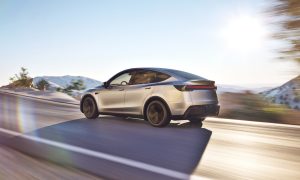
 Elon Musk2 days ago
Elon Musk2 days agoTesla mulls adding a new feature to fight off vandals as anti-Musk protests increase
-
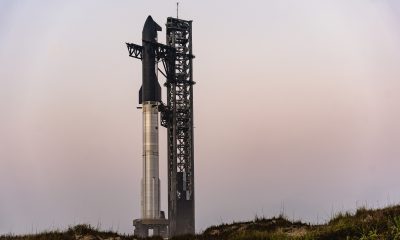
 News6 hours ago
News6 hours agoSpaceX announces Starship Flight 8’s new target date
-
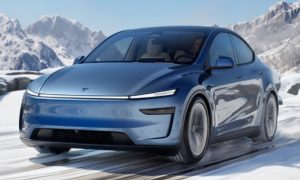
 News3 days ago
News3 days agoTesla’s lead designer weighs in on plans for these two Model Y colors
-
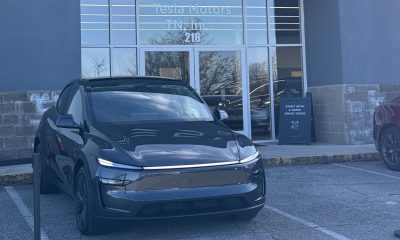
 News2 days ago
News2 days agoTesla starts Model Y ‘Launch Edition’ deliveries in the U.S.
-
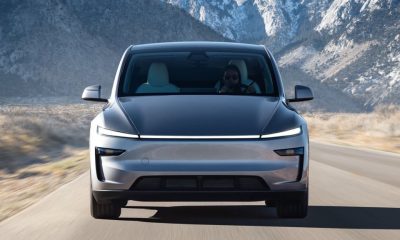
 Elon Musk2 days ago
Elon Musk2 days agoTesla gaining with Republicans as it loses traction with Democrats: Stifel
-
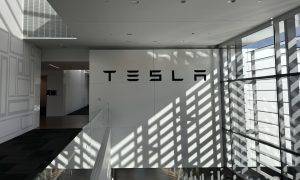
 News3 days ago
News3 days agoTesla design head reflects on over 16 years with the company
-
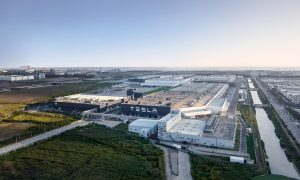
 News1 day ago
News1 day agoTesla China wholesale figures drop in February amid new Model Y transition
